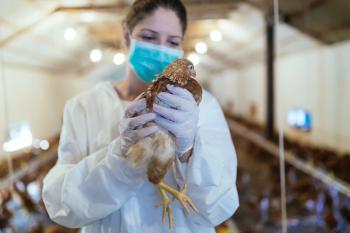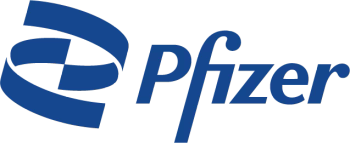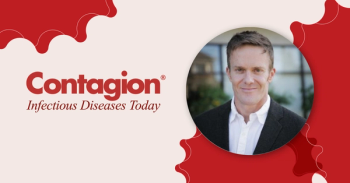
- December 2018
- Volume 3
- Issue 6
Exploring Primary Prophylaxis for Invasive Pulmonary Aspergillosis
Invasive aspergillosis affects up to 13% of immunocompromised patients who are in the hospital.
Aspergillus is a mold commonly found in environ­mental sources such as soil, dust, building material, decomposing plant matter, and water.1 As an infectious pathogen, it primarily causes invasive pulmonary infection, but other infections are possible and may occur as either primary infection (eg, sinusitis or cutaneous) or by hematogenous spread (eg, cardiovascular or central nervous system).2 The most common species responsible for invasive infection in human hosts is Aspergillus fumigatus; however, species such as Aspergillus flavus, Aspergillus niger, and Aspergillus terreus have been associated with invasive infection. In invasive pulmonary aspergillosis, the organism is typically acquired via inhalation and the incu­bation period varies, depending on the strain and available host immune defenses.1
Aspergillus is typically inhaled in a conidial form, which must germinate into the hyphal form in order for progres­sion to invasive disease in a susceptible host.3 The first line of host defense against Aspergillus is phagocytosis of the conidia by macrophages and dendritic cells. These cells are also responsible for signaling and activation of the humoral immune response. If the fungus resists phagocytosis of the conidia form and germinates into the hyphal form, then host neutrophils and monocytes are recruited to the site of infection and play a key role in the destruction of the organism.3
Patients who are at risk of developing invasive pulmonary aspergillosis are those with immunodeficiency, especially that affecting phagocytic function, including lung, liver, or hematopoietic stem-cell transplant (HSCT) recipients; those on long-term high-dose corticosteroid therapy; persons who have some inher­ited immunodeficiency syndromes; patients with advanced AIDS; those with hematologic malignancy, and patients with prolonged neutropenia.2,4 The risk appears to be greater in allogenic HSCT recipients compared with those receiving autologous transplants and is further increased by the presence of graft-versus-host disease (GVHD) due to administration of high-dose corticosteroids. This considered, the most notable risk factor still appears to be prolonged neutropenia. This risk appears to increase as the severity and duration of neutropenia increases. Estimates indicate that the risk of invasive pulmonary aspergillosis increases by 1% per day during the first 3 weeks of neutropenia and by 4% per day with ongoing neutropenia.4
Primary antifungal prophylaxis is beneficial in preventing the development of invasive pulmonary aspergillosis in certain high-risk patients (ie, those with long-term neutropenia or those with highly immunosuppressive drug regimens or disease states). However, a comprehensive list of all patients who may benefit from primary prophylaxis is not immediately clear. The Infectious Diseases Society of America (IDSA) guideline for the treatment of aspergillosis recommends that patients who have undergone HSCT and now have GVHD or those with acute myelogenous leukemia (AML) or myelodysplastic syndrome (MDS) who are at high risk for invasive pulmonary aspergillosis should receive primary prophylaxis.2 Similarly, the American Society of Clinical Oncology (ASCO) and IDSA guideline for antimicrobial prophylaxis for adult patients with cancer-related immunosuppression recommends primary antifungal prophylaxis targeted at molds for patients with AML or MDS or those undergoing treatment for GVHD.5
Preferred agents used in the prophylaxis of Aspergillus spp. include triazoles and echinocandins.2,6 Among the triazoles, posaconazole and voriconazole have the stron­gest evidence for use as prophylaxis. Itraconazole is limited by poor tolerability and unreliable absorption. Within the echinocandin class, micafungin has the strongest data for this indication.2 Patients who are candidates for aspergil­losis prophylaxis may frequently be on drugs that interact with azole antifungals. Triazoles should not be admin­istered with vinka alkaloids and cyclophosphamide due to the potential for toxic levels; therefore, echinocandins are preferred in patients receiving these antineoplastics. Additionally, triazoles can have clinically significant drug interactions with calcineurin inhibitors, mammalian target of rapamycin inhibitors, and tyrosine kinase inhibitors, necessitating therapeutic drug monitoring during concur­rent therapy.2
Posaconazole is manufactured as an oral suspension (cherry flavored), delayed-release tablet, and an intrave­nous (IV) solution, all of which can be used for prophy­laxis of aspergillosis. Most of the prophylaxis trials with posaconazole were conducted with the oral suspension product; however, the data from these trials are often extrapolated to the tablet and IV product formulations.2,7,8 When given for prophylaxis, the oral suspension should be dosed at 200 mg 3 times daily and administered with a full meal or carbonated beverage (eg, cola or ginger ale) to maximize absorption.2 Patients unable to tolerate a full meal with each dose of the suspension should be started on an alternative formulation of posaconazole or an alternative agent. The tablet and IV formulations of posaconazole are not dependent on consumption of a full meal to maximize absorption. These medication formu­lations for aspergillosis prophylaxis are dosed at 300 mg twice daily on day 1, followed by 300 mg daily on day 2 and thereafter.
Oral voriconazole tablets and suspension are the only formulations recommended for prophylaxis.2 Both are dosed at 200 mg twice daily 1 hour before or after a meal. Food and enteral feedings may decrease absorp­tion. Monitoring serum trough concentrations should be considered, specifically in patients exhibiting signs of toxicity, such as hallucinations, visual disturbances, or acute renal failure.2 Trough concentrations of more than 1 to 2 mcg/mL are typically needed to elicit a therapeutic benefit, and concentrations more than 4 to 5 mcg/mL are commonly associated with adverse events necessitating discontinuation of therapy.9
Micafungin has an excellent safety and tolerability profile, but is only available intravenously, which limits its clinical use for prophylaxis. Prophylactic micafungin is dosed at 50 to 100 mg daily.2,6
IDSA, ASCO, and National Comprehensive Cancer Network (NCCN) guidelines recommend aspergillosis prophylaxis in patients undergoing intensive chemotherapy for AML, MDS or where the expected period of neutro­penia is anticipated to be at least 2 weeks.2,5,6 Prophylaxis is started on the first day of chemotherapy and continued until resolution of neutropenia.6 Resolution of neutropenia is typically defined as an absolute neutrophil count of 500—1000 for greater than 3 consecutive days. Patients who’ve undergone allogeneic HSCT also benefit from prophylaxis against molds and should start therapy post engraft­ment until resolution of neutropenia.10 The risk for aspergillosis pre-engraft­ment is notably lower, and administra­tion of prophylaxis does not appear to confer a survival benefit unless patient has had a prior Aspergillus infection.11 Prophylaxis should be given to patients with GVHD receiving chronic immuno­suppression (corticosteroid equivalent more than 1 mg/kg/day of prednisone for more than 2 weeks or another anti-GVHD therapy) until immunosuppres­sion is no longer necessary.2,6 Patients who’ve undergone a lung transplant benefit from prophylaxis during the first 3 to 4 months post transplant. For these patients who also undergo augmentation of their immunosuppres­sion with either thymoglobulin, alemtu­zumab, or high-dose corticosteroids, re-initiation of prophylaxis is recom­mended.2 Optimal prophylaxis therapies and durations for other disease states are poorly defined.
Long-term prophylaxis with posacon­azole or voriconazole can be a signif­icant financial burden to patients. Although fluconazole is often used in various prophylaxis settings, because of its low costs and tolerability, it is not an anti-mold active agent, and NCCN and IDSA guidelines explicitly recommend anti-mold active agents in the prophylaxis of aspergillosis. Oral agents should be selected as first-line therapy, over IV micafungin, unless contraindications preclude their use. The suspension of posaconazole is more affordable than the tablet formulation, but is typically less palatable.
Dr. Stevens graduated with a doctor of pharmacy from the University of Montana in 2010. He is the infectious diseases clinical pharmacy specialist at Providence Alaska Medical Center, where he developed and implemented a comprehensive antimicrobial stewardship program in 2013. He is an active member of SIDP.
Dr. Kammers earned a PharmD from the University of Montana in Missoula, Montana, and completed a PGY1 pharmacy practice residency at Providence Alaska Medical Center (PAMC) in Anchorage, Alaska. She is currently a PGY2 oncology resident at PAMC.
References:
- The US Centers for Disease Control and Prevention (CDC). Information for healthcare professionals about aspergillosis. CDC website. cdc.gov/fungal/diseases/aspergillosis/health-professionals.html. Published August 2018. Accessed September 10, 2018.
- Patterson TF, Thompson GR, Denning DW, et al. Practice guidelines for the diagnosis and management of Aspergillosis: 2016 Update by the Infectious Diseases Society of America. Clin Infect Dis. 2016;63(4):e1-e60. doi: 10.1093/cid/ciw326.
- Shoham S, Levitz SM. The immune response to fungal infections. Br J Haematol. 2005 Jun;129(5):569-82.
- Kousha M, Tadi R, Soubani AO. Pulmonary aspergillosis: a clinical review. Eur Respir Rev. 2011 Sep 1;20(121):156-74. doi: 10.1183/09059180.00001011.
- Taplitz RA, Kennedy EB, Bow EJ, et al. Antimicrobial prophylaxis for adult patients with cancer-related immunosuppression: ASCO and IDSA clinical practice guideline update [published online September 4, 2018]. J Clin Oncol. doi: 10.1200/JCO.18.00374.
- National Comprehensive Cancer Network. Prevention and treatment of cancer-related infections (Version 1.2018). NCCN website. nccn.org/professionals/physician_gls/pdf/infections.pdf. Accessed October 18, 2018.
- Ullmann AJ, Lipton JH, Vesole DH, et al. Posaconazole or fluconazole for prophylaxis in severe graft-versus-host disease. N Engl J Med. 2007;356(4):335-347. doi: 10.1056/NEJMoa061098.
- Cornely OA, Maertens J, Winston DJ, et al. Posaconazole vs. fluconazole or itraconazole prophylaxis in patients with neutropenia. N Engl J Med. 2007;356(4):348-359. doi: 10.1056/NEJMoa061094.
- Hamada Y, Tokimatsu I, Mikamo H, et al. Practice guidelines for therapeutic drug monitoring of voriconazole: a consensus review of the Japanese Society of Chemotherapy and the Japanese Society of Therapeutic Drug Monitoring. J Infect Chemother. 2013;19(3):381-392. doi: 10.1007/s10156-013-0607-8.
- Tomblyn M, Chiller T, Einsele H, et al. Guidelines for preventing infectious complications among hematopoietic cell transplantation recipients: a global perspective. Biol Blood Marrow Transplant. 2009;15(10):1143-238. doi:10.1016/j.bbmt.2009.06.019
- Wingard JR, Carter SL, Walsh TJ, et al; Blood and Marrow Transplant Clinical Trials Network. Randomized, double-blind trial of fluconazole versus voriconazole for prevention of invasive fungal infection after allogeneic hematopoietic cell transplantation. Blood. 2010;116(24):5111-5118. doi: 10.1182/blood-2010-02-268151.
Articles in this issue
almost 7 years ago
Lessons From a Year Full of Infectious Disease Firstsalmost 7 years ago
Ibalizumab Effective for Multidrug-Resistant HIV-1 Infectionabout 7 years ago
Controversies in C Difficile Preventionabout 7 years ago
The Multi-Drug Resistant Organism Networkabout 7 years ago
Enterovirus A71 and Acute Flaccid Myelitis—What's the Link?about 7 years ago
Eravacycline: The IGNITE Growth of the TetracyclinesNewsletter
Stay ahead of emerging infectious disease threats with expert insights and breaking research. Subscribe now to get updates delivered straight to your inbox.



















































































































































































































































































